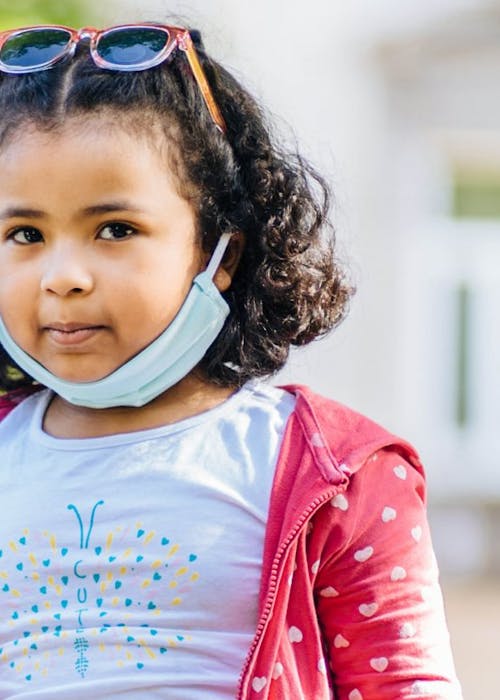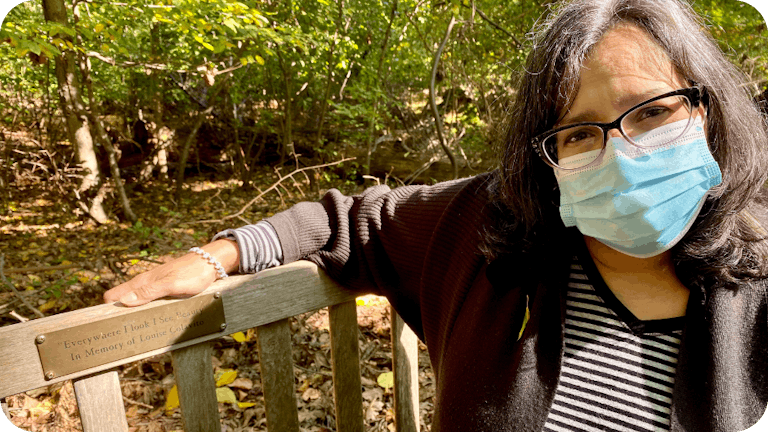

The Fight for Education Supports for NYC’s Students
Insights
March 19, 2021
By: Carlos Rosales
Over the past year, CCC with the support of our Learning Collaborative held several conversations with child and family serving professionals and community members about the policy and budget solutions they hoped to see prioritized to help families overcome the challenges they now face. Through these conversations, we’ve heard from New Yorkers about their experiences during the pandemic, the impact on their lives and the communities in which they live, and the solutions needed to advance equity and recovery for all children and families. Read more from our “Conversations with New Yorkers on Pandemic Response & Recovery” series here.
Since schools shutdown a year ago, the ramifications on children’s education and social emotional well-being have been at the forefront of work underway in communities. Students have faced a year of learning loss, a disconnection from peers, and heightened stress and anxiety.
Maritza Cuevas is a mother of three young adults in the Port Richmond community in the North Shore of Staten Island and a community advocate through the Staten Island Alliance for North Shore Children and Families, which focuses on strategies to improve academic performance and health among students under age 9. For Martiza, the diversity of her community is something she takes great pride in.
“I chose to live in an area where there are people of color because I am Latina and I wanted to raise my children in a community where they can see people that look like them.” For Maritza, the qualities of Port Richmond’s diversity and belonging is what makes her community special, “you have a sense of community here and that’s what I like about Port Richmond: a sense of community, a sense of place.”
As the Director of Education for the Greenbelt Conservancy, which runs environmental education programs for students on Staten Island, Maritza understands far too well how the pandemic has intensified barriers in educational attainment, particularly for low income families and communities of color. When asked about the impact of the pandemic, concerns around the widening educational achievement gap were at the top of her mind.
“We have been talking about education reform for decades, about the way our kids are learning, what they learn, the preparation of teachers – all of that needs to be evaluated because the pandemic just blew this out of the park,” Maritza said. “[Schools, community leaders and even parents] had to shift from one model to another and there was no way they were prepared for this.”
“
“I chose to live in an area where there are people of color because I am Latina and I wanted to raise my children in a community where they can see people that look like them.” For Maritza, the qualities of Port Richmond’s diversity and belonging is what makes her community special, “you have a sense of community here and that’s what I like about Port Richmond: a sense of community, a sense of place.”
-Maritza Cuevas

For decades Black, Latinx and immigrant families have grappled with persistent educational inequalities not only on the North Shore, as demonstrated in CCC’s 2018 community needs assessment, but citywide. In 2019, only 28% of NYC schools were diverse, and two-thirds of Black and Latinx students attend schools that are predominantly Black and Latinx.
According to a study by the Urban Institute, New York State currently ranks 49th in the country on equity in education spending. When combined with local, state and federal funding, wealthy districts outspend poor districts by over $10,000 per pupil. After parents filed a lawsuit against the State of New York claiming that children do not have the opportunity to an adequate education, the New York State Court of Appeals ruled in 2006 that the State is violating students constitutional right to a “sound and basic education.” As a result of the ruling, New York schools were ordered to receive $5.5 billion increase in Foundation Aid. Since the settlement, New York has continually delayed payment or simply refused to pay and still owes $3.8 billion to schools.
Of the money still unpaid from the State, 67% is owed to school districts where more than half the students are Black and Brown. In the FY 2020 budget year, 87% of NYS education cuts were to high need districts, where 63% of students were Black or Latinx. These are just several examples of how education inequality has disproportionally affected students of color and underserved communities.
Education Supports Are Needed Now
CCC’s recent report, “Child and Family Well-being in New York State: Ranking Risks Across 62 Counties” showed that even before the pandemic, far too many of New York’s students have struggled with educational attainment with approximately 45% of third through eighth grade students not scoring proficiently on ELA or Math state exams.
In New York City, the Bronx has some of the lowest Math/ELA pass rates in the state, with only 30 and 35 percent of students passing, respectively. While a larger percentage of students in Manhattan, Queens, Brooklyn, and Staten Island score proficiently on exams than the statewide average, percentages range from 46% to 56%, highlighting how much further support is needed for our students.
Concerns around school resources are heightened now with evidence showing students of color and those living in low-income homes are not receiving the adequate education supports during their own class time.
According to data from the U.S. Census Bureau’s Household Pulse Survey, between September and November of 2020, Black households in the NY Metro Area were almost three times as likely as white households to report zero days of live contact with a teacher in the past week. Hispanic households were almost twice as likely as white households to report zero days of live contact.

“I’ve heard a lot of families complaining about the language barrier between parents and kids going to school,” said Stephanie Portillo, Community Organizer for the Hunts Point Community Partnership at the Hunts Point Alliance for Children. “Kids have had to lean on their parents while going remote, trying to work through the technology aspect but also working through their schoolwork.”
“I am first generation American, and a lot of families in Hunts Point are first generation Americans. My mom didn’t help me with any of my schoolwork because she just didn’t understand the language and didn’t understand the materials. I know that was a huge disadvantage for me, but in-person learning I knew I could get help; I could get tutoring. What kind of access do people have to those extra opportunities right now? Since we are still trying to get a handle on regular schooling, those extra opportunities aren’t readily available right now.”
We know families living in shelters or temporary housing, younger students, students with a disability, and students/parents who are learning English as a second language are especially vulnerable to learning loss and other challenges brought on by the pandemic’s impact on our education system.
Vulnerable Populations by School District
by NYC school district
Sources: New York City Department of Education, Demographic Snapshots ; New York State Education Department in the Student Information Repository System; Retrieved from the Keeping Track Online Database.
These same vulnerable groups are also affected by digital inequality at a time when digital connectivity and access has transformed to become a universal necessity. Last spring, CCC released a data brief on the digital divide which highlighted that over 150,000 children living in households without internet access, barriers are still high for students who are unable to access remote learning.
Several organizations in CCC’s Learning Collaborative have stepped up to support children and families in navigating these challenges. For example, the Hunts Point Alliance for Children and the Hunts Point Community Partnership continues to supply resources to children and families in need. Carmen Rodriguez, Community Ambassador for the program, describes to us how they often met families having incredible difficulty obtaining DOE issued laptops or tablets for remote learning.
What started with their annual backpack and school supply giveaway, transformed into buying and distributing Chromebooks so students without computers can take part in remote learning. Nearly a year into remote learning, the program’s laptop distributions have continued through February 2021 due to the difficulty students have had obtaining DOE learning devices.
In addition, HPAC distributes grade-level education kits to give students and their families supplemental learning materials to support academic growth as best as possible. Seeing a continued need for academic and developmental support for our youngest learners, HPAC partnered with two local daycares, Jump to Success & Hope Family Daycare, to start a pilot service aimed at bridging the technology gap in their district. The program supported these home-based childcare centers by repurposing some of their spaces with tables, chairs and tablets allowing the providers to help provide access to online learning for families with young children.
Many community-based organizations offering afterschool and other youth programs have played a major role during the pandemic in stepping in to offer remote and socially distant school enrichment programs, academic help, arts and crafts, health and mental health services, and other supports that students and families have needed this year.
Join us in advocating to ensure that New York State and New York City Budgets prioritize Education, Equity, and Recovery for all students.
At the state and local level, CCC is currently advocating with partners across the state to ensure New York’s students have the supports needed to address the disruptions they have experienced this school year.
At the state level, we have been advocating against proposed cuts to school foundation aid that would limit the ability of New York’s schools to meet the needs of students and deprive them of emergency federal funds needed to reopen schools safely, support remote learning, and provide extra support to students who have struggled. While both the Assembly and Senate proposed fully funding foundation aid in their budget, it is crucial that we continue to advocate to ensure this restoration is enacted. You can help by writing your state leaders and urging them to ensure New York’s schools can access all federal COVID-19 relief funding to meet the needs of their students.
We are also advocating to protect state funding for programs that have been shown to have positive effects on youth outcomes like attendance, grade progression, math achievement and reductions in disciplinary incidents. For example, during state budget hearings CCC called for the legislature to restore cuts to Advantage Afterschool programs and maintain funding for community schools which offer wrap-around supports for students and families, including upstream prevention services like food pantries and benefit enrollment help, in addition to direct mental health services in the form of counselors, social workers and school based mental health clinics.
With City budget hearings commencing this month, we are advocating for city leaders to prioritize investments in the upcoming budget to stabilize, support and expand access to youth programs that are critically needed now to support students with academic engagement and address the learning loss and physical and social-emotional needs that have been heightened during the pandemic. Among these investments, we are urging Mayor de Blasio and the City Council to restore and baseline funding for summer programs this year so that students and their families have access to supports needed to prepare for the upcoming school year.
Please raise your voice with us to continue advocating to ensure that investments are made at every level of government to support a full recovery for all New York’s students and their families.





